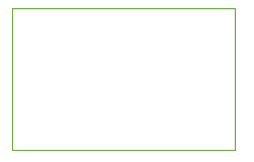
All rectangles are parallelograms, but all parallelograms are not rectangles. Justify this statement.
Answer
532.5k+ views
Hint: Know about the sides and angles of both the rectangle and parallelogram. By knowing sides and angles we can justify the above statement.
First, we will write the properties of a rectangle and parallelogram.
Rectangle: Opposite sides are equal in rectangle.
It is a quadrilateral with four right angles.
Diagonals will be of equal length.
Diagonals bisect each other.
All the angles are equal in case of rectangle.
From the bisecting diagonals two right angled triangles are formed.
Diagram of rectangles is shown below (Two equal and opposite sides and perpendicular to each other.)

Parallelogram: Opposite sides are equal in parallelogram.
It is a quadrilateral with two parallel sides.
Diagonal lengths are not equal.
Diagonals bisect each other.
Opposite angles are equal in case of parallelogram.
When diagonals bisect the parallelogram, two congruent triangles are formed.
Diagram of parallelogram is shown below: (Two equal and opposite sides are not perpendicular to each other.)

Now coming back to the question, all rectangles are said to be a parallelogram if they have two pairs of equal sides.
So, we can say all rectangles can be a parallelogram.
However, not all parallelograms can be rectangles because there are no right angles in parallelogram.
For a parallelogram to be rectangle there should be right angles in it. Not so all parallelograms can be rectangles.
Therefore, we can justify that all rectangles are parallelograms, but not all parallelograms are rectangles.
Note: There might be variation in angles in case of parallelogram i.e. angles at all the edges are not equal.
The sum of all the interior angles in both rectangle and parallelogram is 360 degrees.
First, we will write the properties of a rectangle and parallelogram.
Rectangle: Opposite sides are equal in rectangle.
It is a quadrilateral with four right angles.
Diagonals will be of equal length.
Diagonals bisect each other.
All the angles are equal in case of rectangle.
From the bisecting diagonals two right angled triangles are formed.
Diagram of rectangles is shown below (Two equal and opposite sides and perpendicular to each other.)

Parallelogram: Opposite sides are equal in parallelogram.
It is a quadrilateral with two parallel sides.
Diagonal lengths are not equal.
Diagonals bisect each other.
Opposite angles are equal in case of parallelogram.
When diagonals bisect the parallelogram, two congruent triangles are formed.
Diagram of parallelogram is shown below: (Two equal and opposite sides are not perpendicular to each other.)

Now coming back to the question, all rectangles are said to be a parallelogram if they have two pairs of equal sides.
So, we can say all rectangles can be a parallelogram.
However, not all parallelograms can be rectangles because there are no right angles in parallelogram.
For a parallelogram to be rectangle there should be right angles in it. Not so all parallelograms can be rectangles.
Therefore, we can justify that all rectangles are parallelograms, but not all parallelograms are rectangles.
Note: There might be variation in angles in case of parallelogram i.e. angles at all the edges are not equal.
The sum of all the interior angles in both rectangle and parallelogram is 360 degrees.
Recently Updated Pages
Master Class 12 Business Studies: Engaging Questions & Answers for Success

Master Class 12 English: Engaging Questions & Answers for Success

Master Class 12 Economics: Engaging Questions & Answers for Success

Master Class 12 Social Science: Engaging Questions & Answers for Success

Master Class 12 Maths: Engaging Questions & Answers for Success

Master Class 12 Chemistry: Engaging Questions & Answers for Success

Trending doubts
List some examples of Rabi and Kharif crops class 8 biology CBSE

Which of the following are meaningless A VX B IXIV class 8 maths CBSE

Why does temperature remain constant during the change class 8 chemistry CBSE

What is the term of office of the Chief Justice of class 8 social science CBSE

What are the 12 elements of nature class 8 chemistry CBSE

What is leaching class 8 biology CBSE




